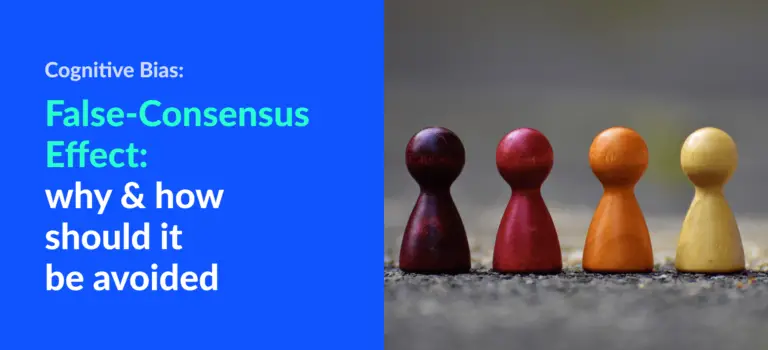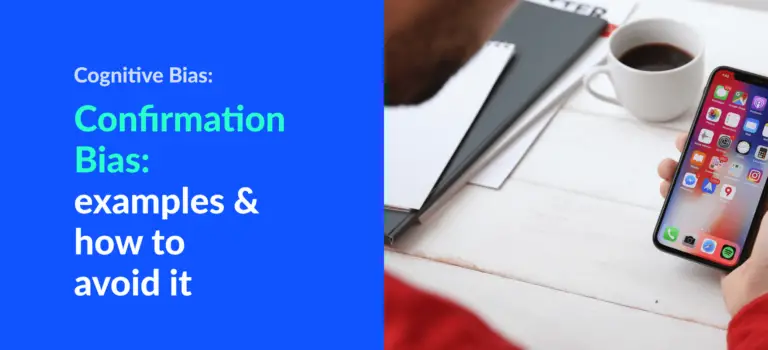Framing Effect: Influencing Decision Making in Product Design & Marketing
In this article, we are going to look at one of the cognitive biases: framing and how we can frame content to influence decision making.
Before going into depth with the concept of framing, let’s break its definition into psychological terms and then in marketing terms.
What is the framing effect in Psychology?
We make decisions based on whether we think the situation is advantageous to us or not. We look at a situation based on whether a scenario is a gain or loss for us. In psychology, this behavior is known as the framing effect or framing bias.
So what is “framing” for product designers and marketers?
Framing is a technique used to manipulate information by changing the way it is presented which affects peoples’ judgments. We may use images and texts or context simply to frame a piece of information.
Think about news articles and how they write their headlines. They deliberately present words in a way to influence our judgments.
Let’s take a look at the newspaper heading:
“Trial Vaccine wipes out breast cancer in Florida patient”.
The writer wants you to know the effectiveness of vaccines so they chose to phrase it this way.
Now we can phrase it more positively like so:
“Breast cancer patient recovers miraculously”.
This would be interpreted as something unconventional has happened. We phrased the sentence differently so that we could attract more viewers to the article.
Now let’s change to UI design, where we have a registration button with the following text:
“Sign Up”
Let’s frame the UX copy to:
“Sign Up and get 20% off”.

Now, this is framed positively, which shows what the users can gain by doing this action. In this case, users get a 20% discount if they sign up.
Framing Examples
To better understand framing, we will need to divide it into three categories: positive, negative and statistical framing.
Positive Framing
Positive framing is generally used to push people to confirm their decisions on the positive aspects of our designs.
Let’s say we want people to buy a vacuum cleaner from our brand. We frame our product to be the absolute best. We would only highlight its merits. This would lead to people wanting our product.
Recently I implemented this technique for Programiz’s Python app marketing. So, let’s go through the different types of framing copies that I started with:
Copy 1: Be a python guru with programiz.
Copy 2: Start a brilliant python career.
I wanted to highlight the positive side of our app but in a very subtle way. For the first copy, there is a big highlight on how much the users are going to progress by using our app. It portrays the message that they can get to a high skill level by using our app.
The second copy shows the gain of a brilliant python career if they use our app.
Now let’s look at the final design used for the marketing:

Negative Framing
Negative framing is used to make people rethink their actions and whether to continue with their decision. It emphasizes the negative aspects of any design.
The trick here is to emphasize negative aspects of the competitor’s design for marketing purposes. Hence, this technique is commonly used in politics.
A common example would be how Pepsi dissed Coke with a creative ad. What makes this more interesting was that coke used the same imagery and changed the text for an awesome comeback:

The Pepsi copy reads “We wish you a scary Halloween!”
And the Coke copy reads “Everybody wants to be a hero!”. This may be one of the best examples of how to creatively frame something negatively.
Climate awareness campaigns use this technique to get people acting. Highlighting the negative aspects makes people rethink a situation. Take a look at the following campaign slogan:
“There’s no Planet B. Save Earth.”
The above slogan emphasizes our negligence in the matter of climate change and gets people to act.

Here is another example that I used for Programiz’s app marketing. The first image emphasizes how boring coding courses and lessons can be. And the second image provides a more fun solution to learning.
Statistical Framing
We can use numbers and statistical figures to frame our product or message. Most advertisements we see use this technique to frame a positive picture of their product. Let’s look at some examples you may be familiar with:
“9 out of 10 dentists recommend our product.”
“Kills 99.9% of germs.”
We have all heard of these taglines and slogans. This method provides some numbers that make it much more trustworthy than products that don’t do these. A sanitizer killing 99.9% germs sounds better than saying the product only leaves 0.1% of germs.
Let’s again look at the marketing asset for Programiz’s mobile app:

The above image is simple and effective and shows the big volume of users that have had successful careers with Programiz.

This is another carousel version of the statistical framing where we focus on how much Python developers earn and how Programiz can help users reach there.
If you want to see the results of these tests for Programiz, I would suggest you take a look at my article on How psychology is used in marketing.
Few more things about the Framing effect
Pressure on people amplifies the effect of framing.
When people are bound by time or are under a lot of pressure about a decision, the effects of this technique are amplified. Many e-commerce sites use this to their advantage.
Let’s say we want to sell a product online. We add a label saying that the discount is only applicable for another hour. We even put a timer beside it. This puts pressure on the buyers to make a decision.
When there are multiple frames that conflict with each other, the effect is nullified.
Conflicting positive and negative frames neutralize each other and people act according to their own beliefs. While in some cases neutralizing framing effect is beneficial, always try to not conflict frames when presenting information to others.
Summing Up
- Framing is a technique to impact people’s decisions by manipulating information.
- There are three basic framing categories: positive, negative, and statistical.
- Frame content in such a way that users can make decisions based on gain or loss mentality.
- When positive and negative frames contradict, they nullify the effect of framing.
- Tense situations and pressure amplify framing effects that are exploited on high-pressure sales.
Further Reading
If you are looking to research some more marketing psychologies I suggest you take a look at Conformity Bias: How Marketers use Social Trends to their Advantage and Cognitive Dissonance in Marketing: Influencing viewers through discomfort.
If you are looking for a list of major cognitive biases used by marketers then I suggest you take a look at List of Cognitive Biases used by Marketers.





